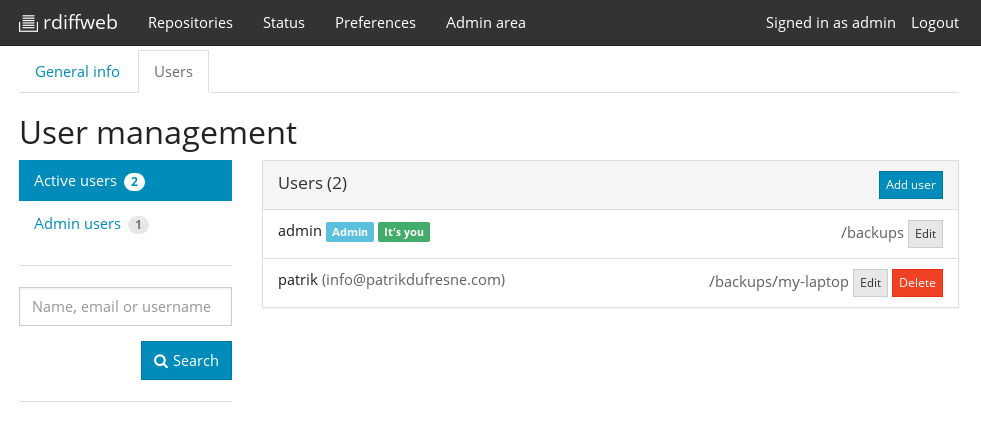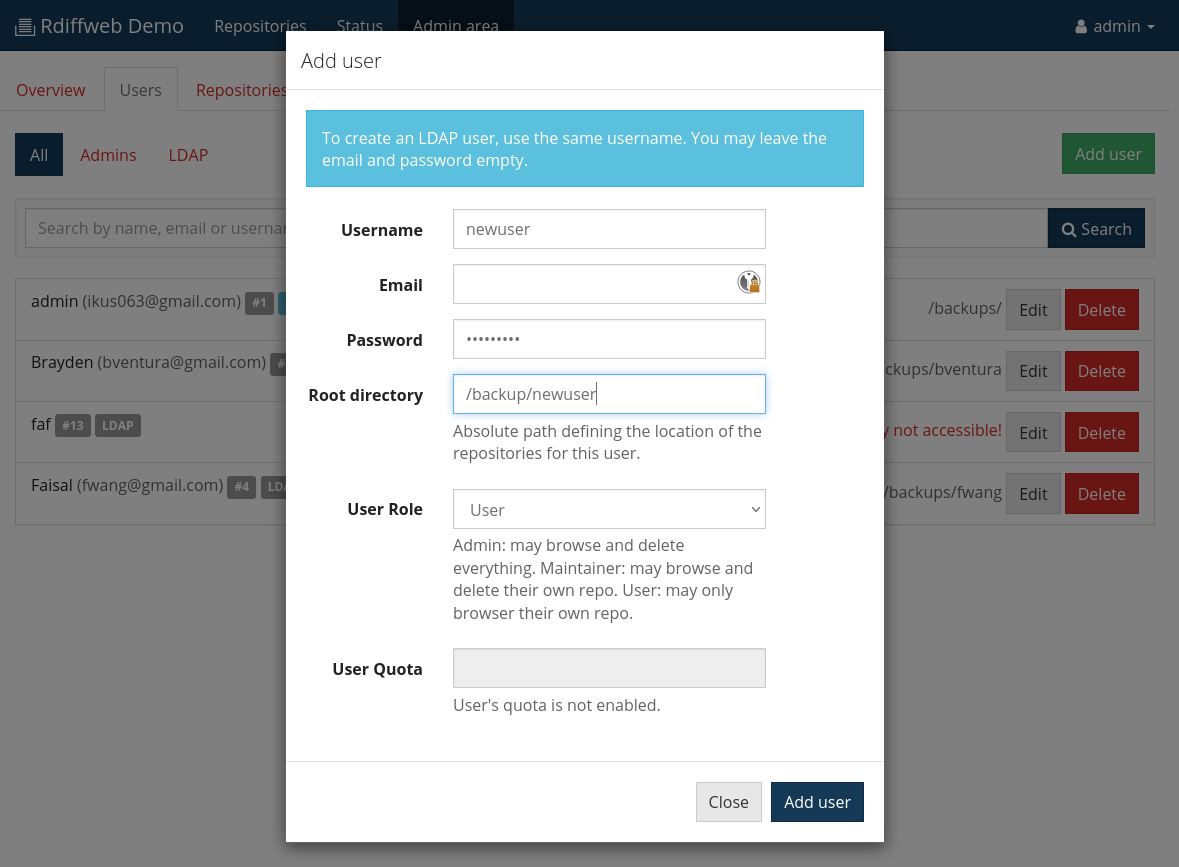Runtime Settings¶
This section describes the settings available from the web interface and that are editable at runtime in opposition to configuration that are defined at application startup.
Users’ repositories¶
A repository represents a directory where rdiff-backup has created a
structure to store your data. Basically, a repository is a directory
containing the rdiff-backup-data folder.
As an example, look at the following folder structure.
+ / (root)
|
+ backups
|
+ my-laptop
| |
| + rdiff-backup-data
| |
| + home
|
+ server1
|
+ rdiff-backup-data
|
+ home
|
+ etc
|
+ var
It contains two (2) repositories: /backups/my-laptop/ and /backups/server1/.
Once your installation of rdiffweb is completed, go to the admin area to configure your users root directory.
For each user, you must assign a “root directory”. The user can access every repository placed underneath the “root directory”. Consider the following assignment:
admin: /backups/
patrik: /backups/my-laptop/

Assignment of a “root directory” is the only way to control access to repositories.
The “admin” user will have access to “my-laptop” and “server1” repositories.
The user “patrik” only has access to “my-laptop” repository.
Users’ roles & permissions¶
In the administration view, you may create a new user to give him access to Rdiffweb user interface. That would allow him to connect to Rdiffweb with a username and a password that you define. In addition, you must also assign a user’s role to this newly created user.

The following table lists permissions available for each role:
Action |
User |
Maintainer |
Admin |
|---|---|---|---|
Browse one of his repositories |
✓ |
✓ |
✓ |
View Graphs, logs and status of his repositories |
✓ |
✓ |
✓ |
Retrieve a file or a directory from one of his repositories |
✓ |
✓ |
✓ |
Modify the encoding of one of his repositories |
✓ |
✓ |
✓ |
Modify the encoding of one of his repositories |
✓ |
✓ |
✓ |
Modify the notification parameters (email and delay) |
✓ |
✓ |
✓ |
Change his password |
✓ |
✓ |
✓ |
Adding new SSH Key |
✓ |
✓ |
✓ |
Deleting an SSH Key |
✓ |
✓ |
|
Delete one of his repositories |
✓ |
✓ |
|
Delete the history of a file or folder from his repositories |
✓ |
✓ |
|
Modify the retention period of one of his repositories |
✓ |
✓ |
|
View system logs |
✓ |
||
View system informations (ram, cpu, version, dependencies) |
✓ |
||
Create new users |
✓ |
||
Modify other user’s email, password and role |
✓ |
||
Define other user’s quota |
✓ |
||
Delete other user’s repository |
✓ |
||
Delete the history of a file or folder from other users |
✓ |
||
Browse other user’s repository |
✓ |